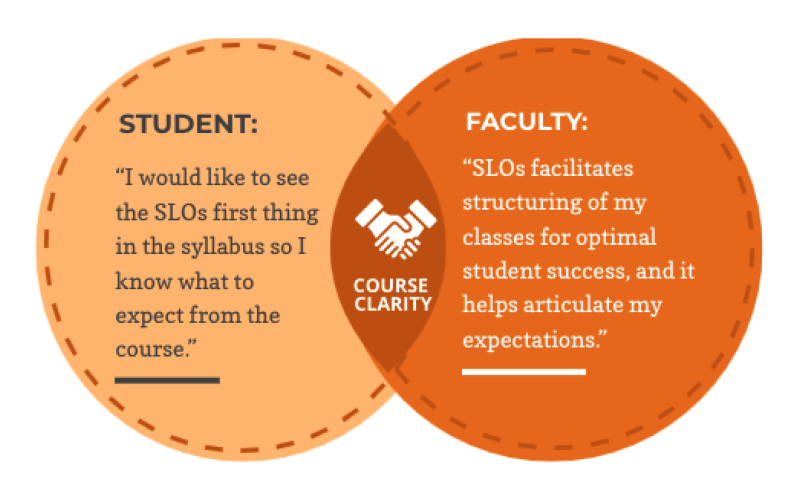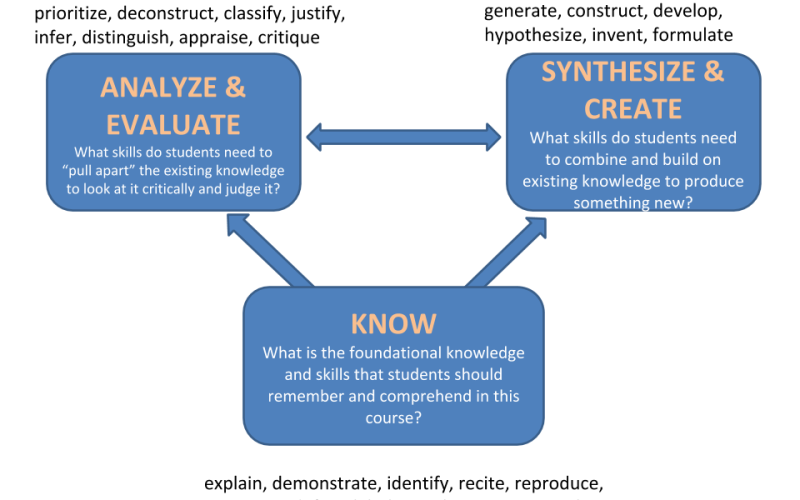Course Design
Who's Doing This at UT?
Cynthia LaBrake, Chemistry, has worked with her colleagues to design class time where students analyze data sets and explain their results. In a very large class, they use undergraduate assistants to guide students through the in-class activities.
How Can I Do This?
Good courses rarely happen by accident. Designing the learning experience you want for your students requires making decisions in the following key areas:
Is your course online, face-to-face, or hybrid? Is it large or small? Will it be a flipped class?
The way your course will be delivered has fundamental implications for how you can design it. Consider the unique factors of the following formats when designing your course:
What defines or influences this course?
Every class is different, and good design takes into consideration each limitation and possibility - the situational factors of your course:
- When, where, and how long your class meets shapes how you’ll plan your lessons.
- How many students you’ll have affects what kind of grading you can do.
- The expectations of external groups, such as professional or accreditation requirements from the field, outline the essential elements of the class.
- BYU's Course Design Guide
What should students know, be able to do, and value as a result of this course?
Beyond thinking about what you will do as an instructor, learning outcomes specify what a student should be able to demonstrate as evidence of learning. A full set of outcomes will span multiple levels of thinking as you help your students advance from building and applying basic knowledge to evaluating or synthesizing complex concepts.
Useful Learning Outcome Format
“At the end of the course, students will be able to [action verb] + [knowledge, skills, or attitudes the student is expected to develop].”
- Example: “At the end of the course, students will be able to summarize the key forces affecting the rise of China as an economic power in the global market.”
- See the Student Learning Outcomes Visual Guide for tips and examples about developing good learning outcomes for your courses.
What opportunities will students have to interact with the content, each other, and the instructor?
Activities and learning assessments provide students with the means to learn as well as receive feedback as to how well they have achieved those learning outcomes. Plan assessments of outcomes that give evidence of what students are in the process of learning (formative assessment) as well as what they have learned at major milestones (summative assessment).
- How will students be able to practice applying the knowledge and skills from the course and get feedback on how they’re doing?
- Learn More
How do course outcomes, activities, and assessments align?
Students and instructors alike enjoy the coherence of well-designed courses, where there is alignment between what the class is supposed to accomplish and how learning is supported along the way. Using a tool like the Alignment Grid to plan and reflect on relationships among outcomes, assessments, and activities can help catch anything that doesn't line up.
- There might be a discrepancy between how much time is spent on or how many points are assigned to particular topics and how important they are for the purpose of the class.
- There might be extra materials, not serving the purposes of any learning outcome, that just clutter up students' inboxes, or there might be learning outcomes without adequate support resources.
Why Is This Important?
Well-aligned courses have less risk of being frustrating, boring, confusing, or irrelevant.
Course content can be more specific and customized when learning outcomes are clear.
As a disciplinary expert, you face a challenge as you plan your course: How much content is enough? Knowing exactly what you want students to know and be able to do can help you prioritize content. Making those decisions empowers you to function as a content curator who selects the best “artifacts” or samples to get your students to the targeted outcomes (Monahan, 2015).
Articulating learning outcomes helps to make sure students are practicing the “right” skills.
Specifying what you expect students to know and be able to do empowers you to design learning opportunities and experiences where the targeted skills have real value as practical tools rather than academic abstractions. Stout (2003) describes that knowing her psychology course learning outcomes meant she could create opportunities for students to observe and “discover” rather than simply memorize, to build concepts from observations rather than from a textbook, and to analyze real data.
Assessments can target knowledge and skills and provide usable information about student learning.
As Nilson (2016) declares, “it’s all about outcomes” (p. 281) when it comes to planning valid assessments, and thoughtful course design enables you to align your assessments so students know what and how well they're learning. For example, if your outcomes indicate that you expect students to apply analytical skills, you can plan assessments that measure what you’ve taught and not only provide you valid information about your teaching but also provide your students usable information about their learning.
Students who know what they are expected to learn can take responsibility for their own learning.
Clearly stating and explaining what content and skills students are expected to learn, why they are important, and how they will be assessed makes students more active participants in their learning. Carlton & Marshall (2009) used this approach to redesigning their foundational genetics course and found that it gave students a road map that helped them focus on learning outcomes for the unit/course, guided their reading, and kept them focused on the larger goals for their learning.
Explore More

Course Design and Planning
"Designing a Well-Crafted Course" is a new course design resource created by the Center for Teaching and Learning and colleagues in Academic Affairs at UT. Please feel free to enroll in the site to learn more!

Student Learning Outcomes : A visual guide
See the Student Learning Outcomes Visual Guide for tips and examples about developing good learning outcomes for your courses.

Bloom's Taxonomy - Simplified
The verbs on this slide will help you construct learning outcomes for each level.

